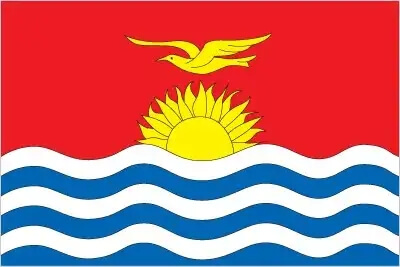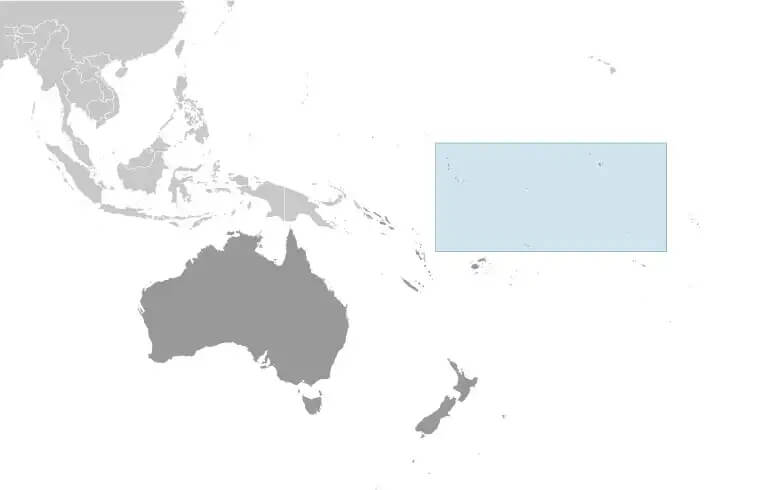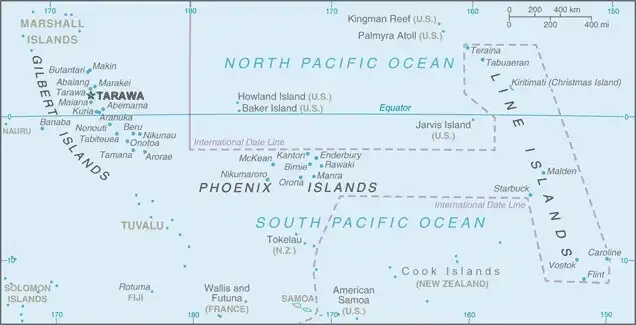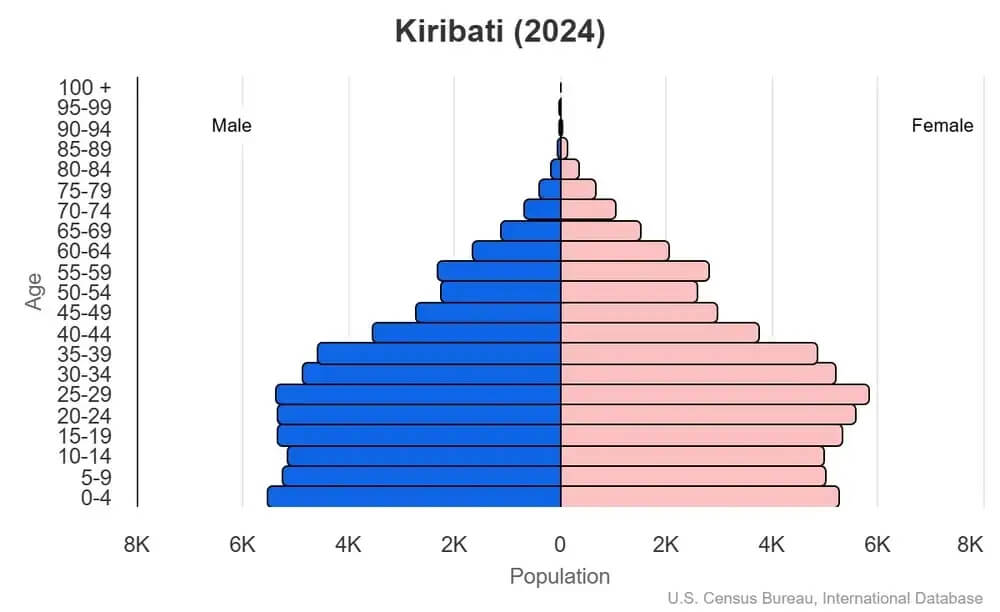World Book
Kiribati
Introduction
Background
The Gilbert Islands became a British protectorate in 1892 and a colony in 1915. The Japanese captured them in 1941, and the US retook them in 1943. The UK granted the Gilbert Islands self-rule in 1971 and complete independence in 1979 under the new name of Kiribati. Kiribati joined the UN in 1999 and has been an active participant in international efforts to combat climate change.
Geography
Area
total : 811 sq km
land: 811 sq km
water: 0 sq km
Climate
tropical; marine, hot and humid, moderated by trade winds
Natural resources
phosphate (production discontinued in 1979), coconuts (copra), fish
People and Society
Population
total: 116,545 (2024 est.)
Ethnic groups
I-Kiribati 95.78%, I-Kiribati/mixed 3.8%, Tuvaluan 0.2%, other 1.7% (2020 est.)
Languages
Gilbertese, English (official)
Religions
Roman Catholic 58.9%, Kiribati Uniting Church 21.2%, Kiribati Protestant Church 8.4%, Church of Jesus Christ 5.6%, Seventh Day Adventist 2.1%, Baha'i 2.1%, other 1.7% (2020 est.)
Population growth rate
1% (2024 est.)
Government
Government type
presidential republic
Capital
name: Tarawa
Executive branch
chief of state: President Taneti MAAMAU (since 11 March 2016)
head of government: President Taneti MAAMAU (since 11 March 2016)
Diplomatic representation in the US
chief of mission: Ambassador Teburoro TITO (since 24 January 2018); note - also Permanent Representative to the UN
Diplomatic representation from the US
chief of mission: Ambassador Marie DAMOUR (since 6 December 2022); note - Ambassador DAMOUR is based in the US Embassy in the Republic of Fiji and is accredited to Kiribati as well as Nauru, Tonga, and Tuvalu
Economy
Economic overview
lower-middle income, Pacific island economy; environmentally fragile; sizable remittances; key phosphate mining fund; tourism and fishing industries; public sector-dominated economy; recent withdrawal from Pacific Islands Forum; ongoing constitutional crisis
Real GDP (purchasing power parity)
$438.143 million (2024 est.)
$416.221 million (2023 est.)
$405.468 million (2022 est.)
Real GDP per capita
$3,300 (2024 est.)
$3,100 (2023 est.)
$3,100 (2022 est.)
Exports
$17.099 million (2023 est.)
$20.58 million (2022 est.)
$10.754 million (2021 est.)
Exports - partners
Thailand 85%, Japan 6%, Philippines 3%, UAE 2%, Fiji 1% (2023)
Exports - commodities
fish, coconut oil (2023)
Imports
$293.624 million (2023 est.)
$272.004 million (2022 est.)
$201.984 million (2021 est.)
Imports - partners
China 24%, Australia 20%, Fiji 15%, Japan 7%, NZ 6% (2023)
Imports - commodities
ships, centrifuges, refined petroleum, rice, raw sugar (2023)
Human Development Index
The country's Human Development Index (HDI) is 0.644, ranking it 140th out of 193 countries tested. (more information)



